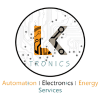OLED Display with Arduino Leave a comment
An Organic Light light-emitting diode (OLED) display is a type of flat-panel display technology that uses organic compounds to emit light when an electric current is applied. OLEDs are known for their vibrant colors, high contrast ratios, fast response times, and flexibility. Unlike traditional liquid crystal displays (LCDs) that require a backlight, OLEDs are “emissive” displays, meaning each pixel generates its light. This allows for more accurate and dynamic color reproduction, as well as deeper blacks since individual pixels can be turned off completely to achieve true black.
Here are some key features and advantages of OLED displays:
- Thin and Flexible: OLED displays can be made very thin and flexible, making them suitable for applications such as curved or rollable screens.
- Wide Viewing Angles: OLEDs offer wide viewing angles, maintaining color accuracy and brightness even when viewed from different angles.
- Faster Response Time: OLEDs have faster response times compared to traditional LCDs, resulting in smoother motion and reduced motion blur.
- High Contrast Ratios: OLEDs can achieve high contrast ratios, as individual pixels emit their light, allowing for better differentiation between light and dark areas on the screen.
- Energy Efficiency: OLEDs are generally more energy-efficient than traditional displays because they don’t require a constant backlight. Power is consumed only when the pixels are emitting light.
- Better Color Reproduction: OLED displays can produce more vibrant and accurate colors due to their ability to emit light directly.
Despite their advantages, OLEDs also have some challenges, including potential issues with long-term durability (especially for blue OLEDs), susceptibility to water damage, and manufacturing costs. Researchers and manufacturers are continually working to address these challenges and improve the technology.
OLED displays are commonly used in various electronic devices, such as smartphones, televisions, computer monitors, and wearable devices. As technology advances, OLEDs continue to play a significant role in the evolution of display technologies.
***************************************************************************************************************
***************************************************************************************************************
* Company Name:LK Tronics
* Author: Research & Development Department
EXPERT GUIDANCE TO BRING YOUR DREAM PROJECT TO LIFE
* Date: 2023/ 12/21
* https://lk-tronics.com/
***********************************************
* All rights reserved. No part of this code may be reproduced, distributed,
* or transmitted in any form or by any means, including photocopying, recording,
* or other electronic or mechanical methods, without the prior written permission
* of LK Tronics, except in the case of brief quotations embodied in
* critical reviews and certain other noncommercial uses permitted by copyright law.
************************************************/
#include <Wire.h>
#include <Adafruit_GFX.h>
#include <Adafruit_SSD1306.h>
#define SCREEN_WIDTH 128
#define SCREEN_HEIGHT 64
Adafruit_SSD1306 display(SCREEN_WIDTH, SCREEN_HEIGHT, &Wire);
void setup() {
Serial.begin(9600);
display.begin(SSD1306_I2C, 0x3C);
display.clearDisplay(); // Clear the buffer
}
void loop() {
display.setTextSize(3);
display.setTextColor(SSD1306_WHITE); // Draw white text
display.setCursor(30,30); // Start at top-left corner
display.print(F("LK Tronics"));
display.display(); // Show the display buffer on the screen
delay(2000);
display.clearDisplay();
}



